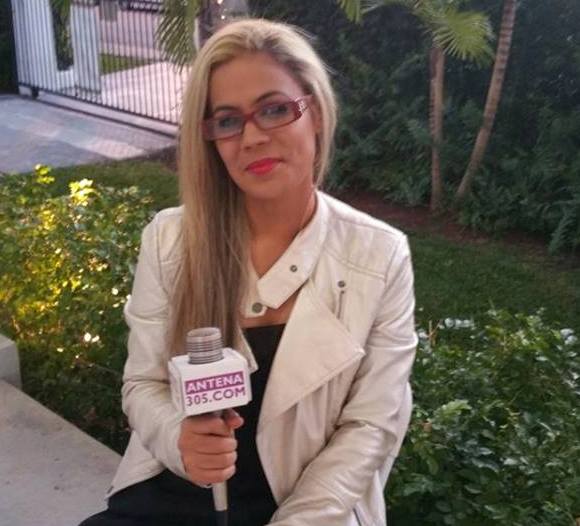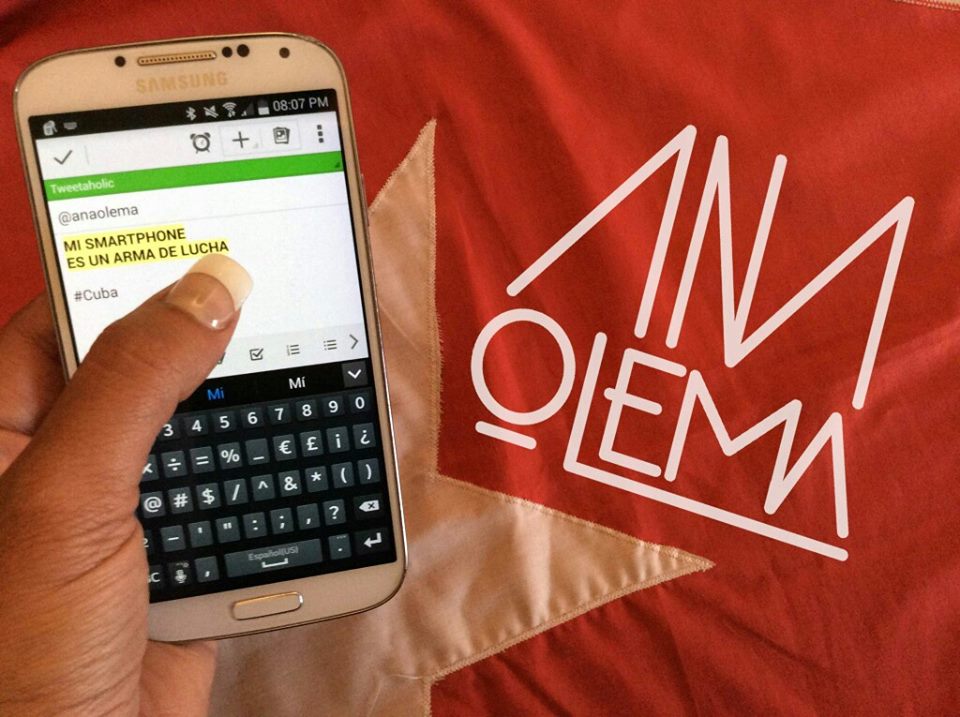EspañolAna Olema is a visual artist, an activist for human rights, and a migrant. She’s the product of diverse experiences, and undoubtedly a survivor. Her gestures, clothing, hairstyle, and accent, are a unique mix of the Caribbean and Latin America.

However, she defines herself first and foremost as “a global citizen and a Cuban.” She explains this duality in a very simple way: “Cubans cling to our citizenship for resistance.” Olema recalls that “whoever left the country was considered a traitor for long time, and that psychological projection continues to this day.”
The PanAm Post spoke with the multifaceted Olema about her work and her epic journey from Quito, Ecuador, to the border that separates Matamoros (Mexico) from Brownsville (United States). It was an odyssey made without any documents: as a Cuban, she failed to meet visa requirements for each country she passed through, so she had to smuggle herself across borders.
She spoke of coyotes — people-smugglers plying the US-Mexico border — guerrilla, the army, theft, abuse, and even sleeping with a gun in her hand.
Like her, 53,423 Cubans crossed the southern US border between 2010 and 2014, to take up residence in the North American country. And that number appears to be on the rise: 37 percent of the Cubans who entered the United States in 2014 used this route.
Beginning an Endless Journey
“I’d gone in and out of Cuba a little because of my art. I had experienced leaving Cuba, but less and less, as my activism increased,” says Olema, emphasizing that she traveled by her own means, “not because I received anything from the regime.”
Her boyfriend at the time tried to escape Cuba on a raft for the fifth time, but he was caught and fined: “In addition, he was wrongly accused of a crime, because we all know that Cuba’s legal system doesn’t work.”
Then, her partner’s situation became more complicated, and when he faced the strong possibility of ending up in prison, they seized the sudden opportunity of flying to Ecuador to record a rap album.
In April 2012, after several months in Ecuador, Ana and her boyfriend decided to undertake the long journey to the United States. “It’s an experience that changed my life, and it connected me with Latin America,” she says.
Mexico or Bust
“We did the trip from Ecuador to Colombia in a taxi. Each passenger paid US$50 to the driver, and we crossed into Colombian territory crouched and hidden in the car.” From the bus station near the border, they traveled to Cali.
The coyote taking them to Guatemala handed a gun to every traveler for their own protection.
There, Olema gave lectures at a local university, but was concerned about how they would cross through Colombia, given that it was “very dangerous” without papers. Cubans and other migrants gave her the information about what border to cross, what bus to take, and which coyote they should hire.
There are three ways to travel to Panama from Colombia: by sea, by land, or by air. However, for illegal migrants, there are only two ways: by sailboat, through the San Blas Islands, or by land, crossing the Darien Gap.
The couple decided to go by sea. They found someone to help them cross by boat to Panama: “We waited, but the sailboat didn’t arrive. Then, the person comes and tells us that we should go by land, because whoever was in charge of the boat was too delayed.”
With only a backpack containing a couple of books and a laptop they entered the jungle to cross Tiger Mountain into Panama. They were suddenly in a group of 40 people: “We were seven Cubans, several Nepalese, and the remainder were Somali.”
Olema describes it as “the guerrilla path,” a place where you see “the worst and the best of human beings.” They had to struggle for their own survival: “We exchanged all of our clothing for a candy bar or some milk.” They brushed shoulders with wild animals, with a panther passing right by Olema’s side at one point.
“Hours before we arrived to the Panamanian border, the guerrilla raped all the women, including the pregnant ones, and some men.”
Despite their ordeal, the only option was to continue onwards to Panama City. “My boyfriend arrived shirtless, only wearing shorts. I had small shorts, a blouse and a scarf that covered me a little more, because my shorts were too small. We’d given away everything along the way.”
Olema’s father helped her as best he could, sending money from the United States. However, he could only sent cash in small amounts to prevent her from being robbed.
Central American Violence
Central America was another terrifying chapter. Although she said the journey in Costa Rica was “very easy,” it became complicated in Nicaragua and Honduras. “In Nicaragua, the army caught us. They threw us on the ground with guns. And they frisked all the women,” claiming to be searching for money.
They wanted me to kneel, but I don’t kneel before anyone.
The situation became even more tense: “an officer told me that I was really beautiful, and he told two other officers to check me out. They wanted me to kneel, but I don’t kneel before anyone.”
Olema escaped this time, only suffering the theft of her laptop and cash. They were robbed again at gunpoint across the border in Honduras. “We had no more money, but I got scared because they were pointing their guns right at my head.”
They were even encouraged to use violence to defend themselves. When they arrived in San Pedro Sula, the most violent city in the word, the coyote taking them to Guatemala handed a gun to every traveler for their own protection.
“We slept with a gun in our hands. The coyote had a contact who got us the weapons.” They managed to cross into Guatemala and Mexico, but the coyote abandoned them in Mexico City, instead of taking them to the border as promised.
“We had to get to the border on our own. We got tickets in the most expensive bus. But we were afraid to stay there, because if we got caught, they would send us back to Cuba,” Olema recalls.

The bus bound for the border stopped, and asked for the documents of all passengers. “But we would not let them take us back. We gave them all the money we had.” When they reached the border, they stopped again. Thankfully, Olema explains, Cubans no longer need to cross the desert to enter the United States.
“A Cuban guy who came with us made a mistake. He made a phone call that he shouldn’t have, and that call gave us away. We were sent to a little office at the Mexican [side of the] border, and the officials asked us for money.”
“They requested $600 from each one of us. But it was a game of power. The man accepted the $600 from our Cuban partner and nothing from us, because he knew that it would more difficult for him to take us back to the city than to let us go.”
The migration agent waited for an old man who came accompanied by a coyote to send them across the border. “The old man said he was going to the United States to live the last part of his life. He had paid $10,000 for the whole package.”
They reached the border and the turnstiles where they had to insert a few coins to pass to the US side.
“When my turn came, I told the officer: ‘I come under the Cuban Adjustment Act,’ but it was a mistake. The officer looked at me and said ‘Do you mean adjustment or refugee?'”
“In fact, there is so much misinformation in Cuba, that Cubans don’t know what to say when they arrive.… It’s important that Cubans say they come seeking refuge or political asylum.”
Although she wouldn’t want to repeat the journey, Olema’s perspective on her continent and her mission were fundamentally transformed by it.
“I never would have appreciated living in the United States so much, a country that is a democratic giant, even with its imperfections, if I hadn’t made that trip. It changed my life.”
Translated by Rebeca Morla. Edited by Laurie Blair.
 Versión Español
Versión Español












